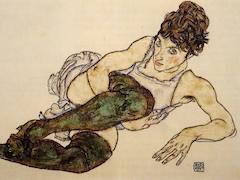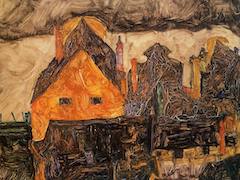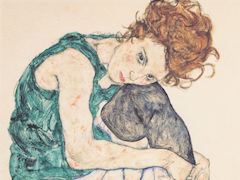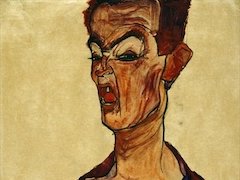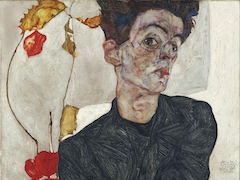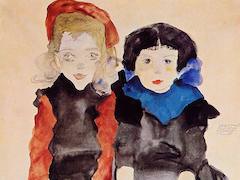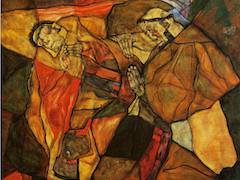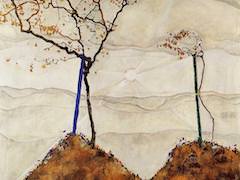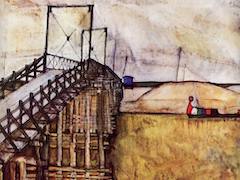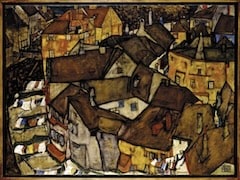Setting Sun, 1913 by Egon Schiele
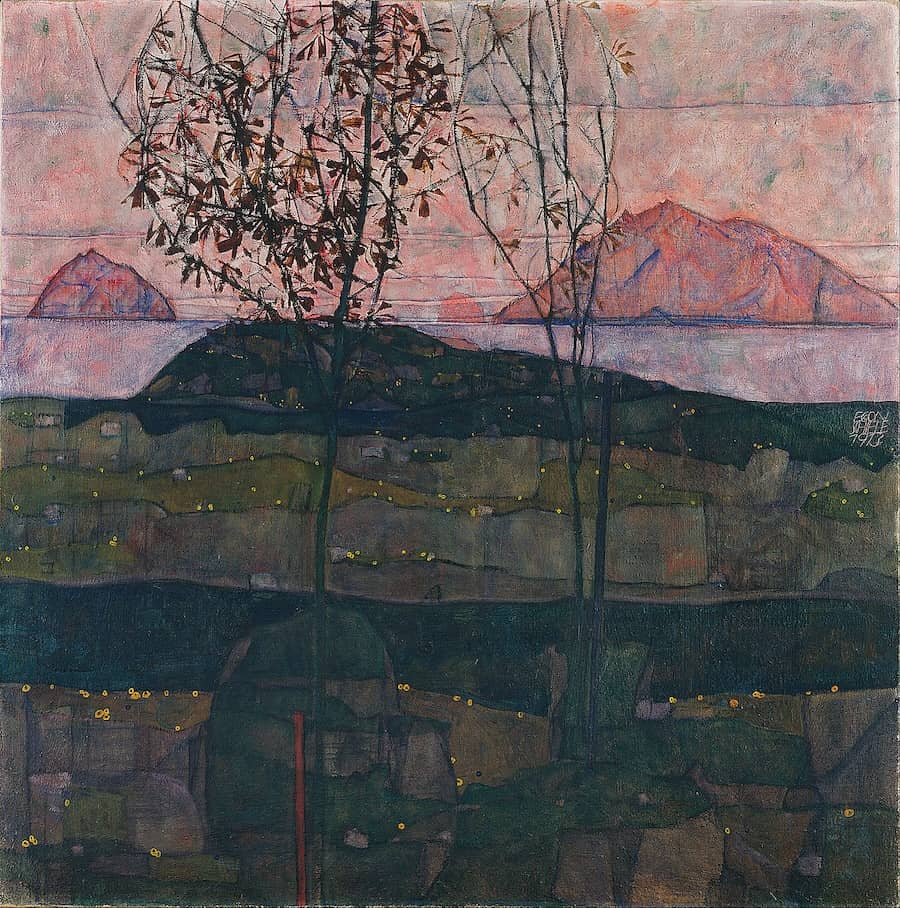
"What do you think of this sunset?" This question posed by Arthur Roessler, an art critic and personal friend of Egon Schiele, was answered as follows by the young medical student Rudolf Leopold:
You call this painting just a sunset.... Looking at this work, however, one would have to say, with all the appropriate melancholy, that the sun is sinking. It's already grown dark and cold in the foreground, and every leaf on the twigs has grown stiff from the cold. And before such a deeply melancholic sky, which no artist before Schiele ever painted in such a way, I am even moved to ask: will this sun, which is just departing, ever return?"
As it turned out later on, this mood which Rudolf Leopold so spontaneously described is precisely the one which Egon Schiele himself had chosen as the painting's title: on the back of the canvas, the artist had written Versinkende Sonne ["Sinking Sun"].
In this painting of 1913, Egon Schiele works with motifs and impressions which he had collected on a journey to Trieste. Behind two young chestnut trees, growing bravely towards the heavens in a barren and hilly karst landscape, the sea is visible, and there are two islands on the horizon. Behind these, the sun is setting - for which reason it cannot possibly illuminate the islands' front sides, which should logically appear black amidst the sun's glare. Schiele, however, paints these islands such that they glow like backlit crystals, combining them with the sky and the sea to form a single colourful whole. But it was probably more than just formal considerations that moved Schiele to suspend reality: in the landscapes, just like in his existential pictures of human beings, he wanted not to show that which he could see but to express that which he felt. His depictions of nature are every bit as emotional as his self-portraits; they pose questions and allow one to recognize the fact that the most important things can only be felt, and not seen.

